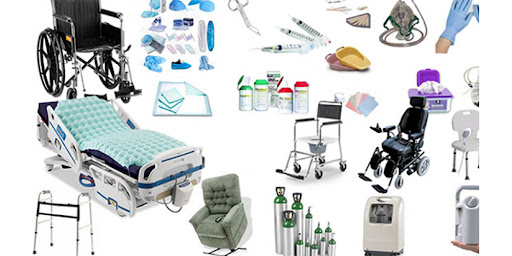In today’s fast-evolving healthcare landscape, the role of medical equipment and supplies is more crucial than ever. From hospitals and clinics to home care setups, having the right tools not only ensures accurate diagnoses but also enhances treatment and patient care outcomes. Whether you're a healthcare provider or a caregiver, understanding the significance of quality medical equipment and supplies is essential for delivering safe and effective care.
What Are Medical Equipment and Supplies?
Medical equipment and supplies encompass a wide range of tools, devices, and consumables used by healthcare professionals and caregivers to diagnose, monitor, treat, and manage various health conditions. They are typically categorized into:
- Medical Equipment: Durable devices such as ventilators, ECG machines, ultrasound scanners, and surgical instruments.
- Medical Supplies: Disposable or consumable items like gloves, masks, syringes, bandages, and catheters.
Both are essential to support daily healthcare operations, from routine check-ups to complex surgeries.
Why Medical Equipment and Supplies Matter
- Accurate Diagnosis
- Reliable diagnostic equipment, such as imaging devices and monitoring systems, is key to identifying health issues at an early stage. Early detection leads to more effective treatments and better recovery rates.
- Efficient Treatment
- Advanced medical equipment helps deliver precise treatments, especially in critical care. Tools like infusion pumps, defibrillators, and ventilators can save lives in emergency situations.
- Enhanced Patient Safety
- High-quality medical equipment and supplies reduce the risk of infection, complications, and procedural errors, ensuring safer outcomes for patients.
- Operational Efficiency in Healthcare Facilities
- Having the right supplies on hand minimizes delays, allowing healthcare professionals to perform procedures efficiently and effectively.
- Support for Home Healthcare
- With an increase in home-based care, items like glucometers, oxygen concentrators, and mobility aids empower patients to manage their health in the comfort of their homes.
Common Types of Medical Equipment and Supplies
Diagnostic Equipment
- X-ray machines
- ECG monitors
- Blood pressure cuffs
- Thermometers
Therapeutic Equipment
- Ventilators
- CPAP machines
- Infusion pumps
Surgical Instruments
- Scalpels
- Surgical scissors
- Anesthesia equipment
Medical Consumables
- Gloves
- Face masks
- Syringes
- IV sets
- Bandages and dressings
Home Healthcare Devices
- Nebulizers
- Blood glucose monitors
- Mobility aids
How to Choose the Right Medical Equipment and Supplies
- Quality Certification
- Always ensure that the products meet national and international medical standards, such as ISO or FDA certification.
- Supplier Reputation
- Purchase from established suppliers with a proven track record and positive customer feedback.
- After-Sales Support
- For complex equipment, opt for suppliers who provide training, maintenance, and technical support.
- Budget and Value
- While affordability is important, never compromise on quality. Reliable equipment lasts longer and performs better, reducing long-term costs.
- Ease of Use
- Especially for home healthcare, choose user-friendly devices with clear instructions to ensure proper usage.
Where to Buy Medical Equipment and Supplies
You can source medical equipment and supplies from:
- Specialized Medical Suppliers: Companies dedicated to healthcare products.
- Online Marketplaces: Platforms like Amazon offer a wide variety of medical supplies with customer reviews.
- Local Distributors: For quick access and personalized service.
- Direct Manufacturers: Ideal for bulk purchases or customized solutions.
Final Thoughts
Whether for professional healthcare facilities or home care, having access to the right medical equipment and supplies is non-negotiable. These tools not only aid in the efficient delivery of care but also ensure patient safety, faster recovery, and improved health outcomes.
Always prioritize quality, reliable suppliers, and appropriate training to make the most of your investment in healthcare equipment and supplies.





Comments